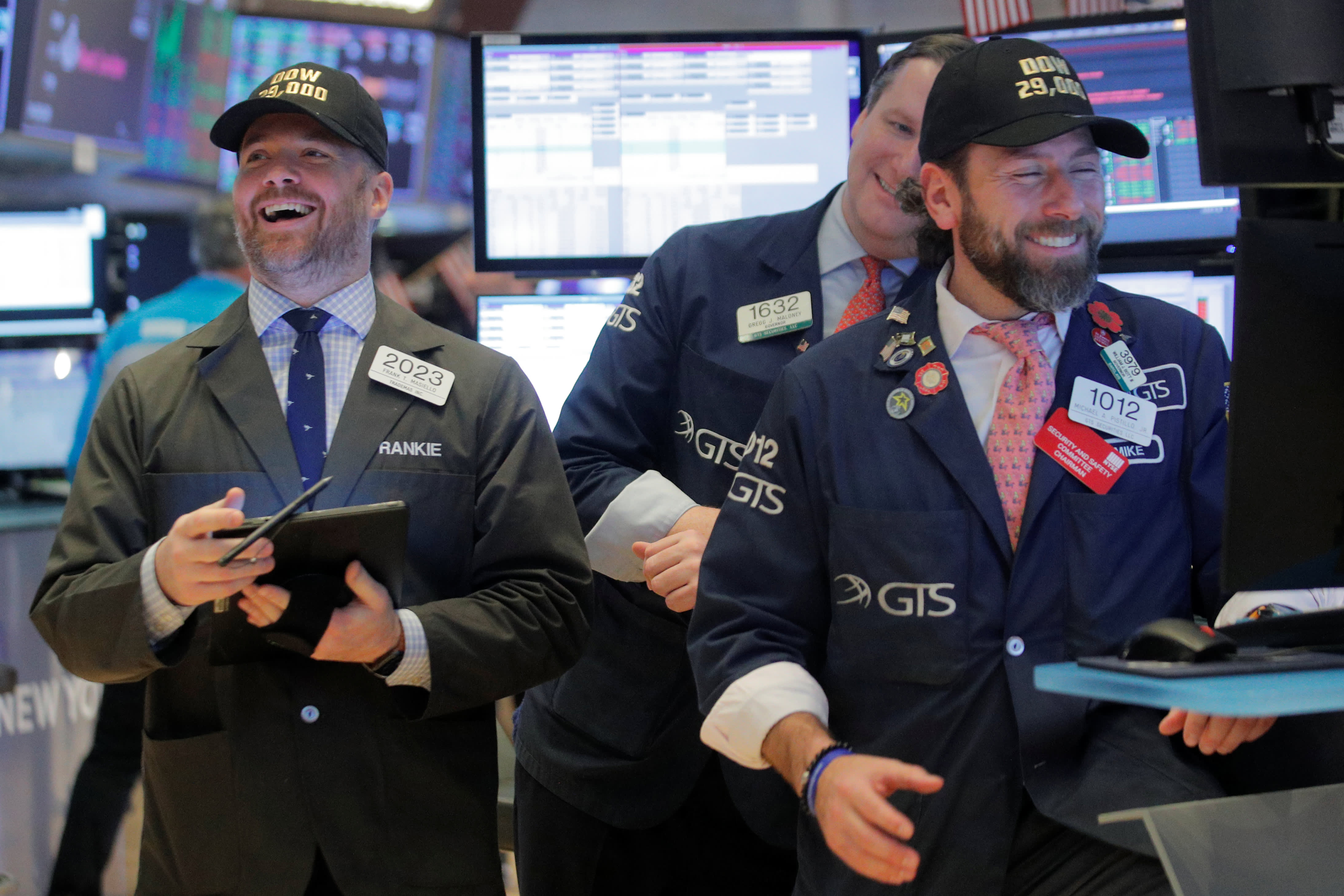The insistent refrain “new all-time record” has been played so often recently that it sounds like a broken record.
For readers born after the age of vinyl, the term refers to when the needle gets stuck in a groove, repeating a phrase over and over until you either move the arm or throw the record at a wall in disgust.
Given a series of new highs for the S&P 500, the Dow Jones Industrial Average and the Nasdaq, the obvious question is who is doing all this buying? My first assumption was that investors, whose portfolios lagged because of their lack of U.S. equity exposure through a triumphant 31.5% year for the S&P, might be jumping on board.
The largest group of U.S. institutional investors are the state and municipal pension plans. To get a sense their scale, consider that the California and New York state funds contain close to $600 billion combined, with the nationwide system comprising over $4 trillion in assets. An increase of a few percentage points in long-only equity allocation would certainly help drive stocks higher.
Unfortunately, my theory about public plans was unilaterally incorrect; state pension directors are doing the exact opposite and continue to reduce their domestic equity exposure.
According to several contacts within government pension offices, the typical U.S. public plan has been reducing its allocation to long-only U.S. equity for several years, shifting primarily toward private equity. Calpers, for example, carries a 24% weight in domestic equity while the state of Massachusetts was in the teens as of the last reporting period.
Retail traders?
With institutions, including public plans, major endowments, and mutual funds net sellers of U.S. equity, what other groups could account for the steady advance? Retail clients, accounting for 20% or $7 trillion of the total U.S. market ownership, added to their stock portfolios in 2019.
According to a Goldman Sachs study, households now have a comparable equity allocation to 2007, only surpassed by the dotcom bubble of 2000, implying that retail buying is an unlikely driver of the current move. Sovereign funds, another well-heeled cohort, have been increasing their private equity allocations, generally at the expense of equities.
That leaves two other groups of buyers capable of pushing the averages higher: public corporations themselves and long-short hedge funds. The shrinking of the U.S. equity supply, including buyouts to private equity firms, acquisitions, and share repurchases, is acknowledged as a significant factor contributing to the rise in equity prices. This should continue in 2020, but at an anticipated rate in the $500 billion range, or around half of the 2019 total.
Hedge funds?
There has been less attention paid to how shifting allocations within hedge funds may be contributing to the all-time stock market records. With the average US equity hedge fund returning 15.3% in 2019, compared to the S&P 500’s 31.5%, many of the weaker-performing managers have been struggling to justify their 2% and 20% fee structure, particularly when compared to extremely low index fund fees. Not only have I heard rumblings that many funds are considering moving more “long,” but last week, a well-regarded tech-focused hedge fund, with a strong track record, announced the inception of a long-only fund.
There is approximately $770 billion of capital invested in U.S. equity hedge funds, which corresponds to roughly $1.44 trillion of investible assets, equal to about 4% of the total US equity market capitalization.
If the hedge fund community closes 5% to 10% of its estimated shorts and increases its long side by a similar degree, this would translate into more than $150 billion of incremental buying power. If that magnitude of move is already underway, it could be propelling the price of some top performing tech/communications stocks including Apple, Facebook, Netflix, Google, Microsoft and Salesforce.com.
Of course, there is the wild card position, occupied by quant funds, multi-strategy funds, and high frequency traders, representing an estimated $1.5 trillion to $2 trillion in liquid assets. It’s impossible to know how much these groups are influencing each new all-time record, but it would be foolish to dismiss their impact.
Obviously, it’s not easy to determine the source of buyers in this “new record” environment and how long they intend to stay. The thought of managers playing catch-up is not my most comforting image. We would prefer thinking about hearing strong earnings guidance over the next few weeks to provide needed support should fickle possible buyers shift course again.
Karen Firestone is chairman, CEO, and co-founder of Aureus Asset Management, an investment firm dedicated to providing contemporary asset management to families, individuals and institutions.
